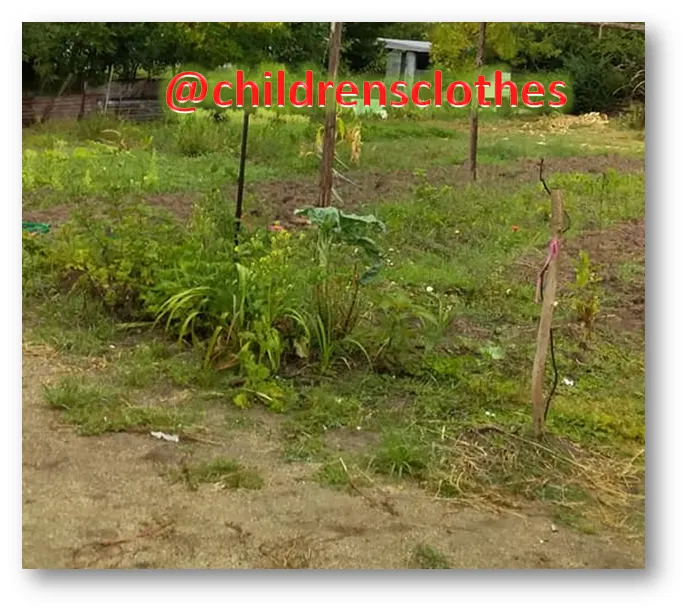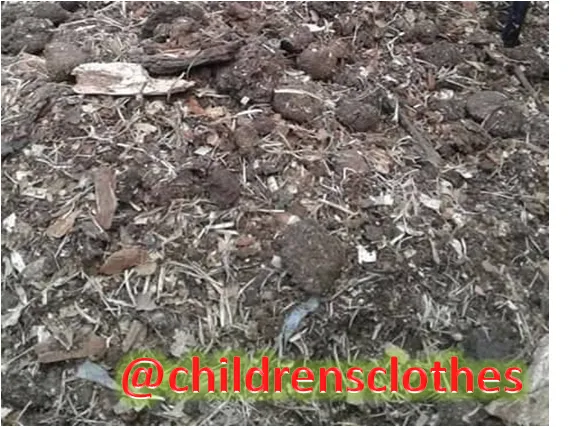Today we want to continue sharing classes about school gardens with you.
Goals
• Map the school grounds and the location of the garden
• Raise awareness about the ecosystem.
• Plan improvements in the school grounds.

There are many things to do before properly starting to grow the garden. Four activities to increase environmental awareness are mentioned below. It is better to address them from the beginning:
• Map the school grounds and the location of the school Orchard stimulates observation and facilitates subsequent planning.
• Starting a "greening project" improves the ground of the school and attracts attention to him.
• Observing existing plots and wildlife increases the Children's awareness of the ecosystem.
• Starting with a lot of compost reinforces the understanding of soil and recycling, and is a good procedure to prepare the soil in time for the new horticultural season.
A. MAPPING
1. Map the terrain
Start by asking students to make maps sketches of the entire school grounds, according to their age.
The little ones can draw a general representation;
the elderly can take action and try to make the flat is realistic (maybe as part of your classes maths). You also make a sketch. A good map or drawing sharpens the attention of who draws it, and help in the request for collaboration, talks, Explanations or requests for financial assistance. The maps They can be presented to children, parents, sponsors, the Garden Group or local authorities. They provide a basis for discussion about what needs to be done and how much it will cost. As well Morality increases the fact of comparing the drawings of the "before" with the drawings of the "after" a year of work.
The map should also show the main elements of the land, for example, school facilities, services, trees, shrubs, pots, trails, main roads, entrance doors, containers or garbage cans, water supply equipment or facilities electric. Signaling all these elements is a good learning exercise for students and helps people outside the school understand the map. Let the children select the maps they want to show and include copies in the garden file.
The location of the garden If there are several options to locate the garden, mark the different sites on the map and use it to discuss and decide where it should be located. Ideally, the garden should to be:
• on flat ground;
• away from main roads or highways;
• in a place visible from the classroom and, if possible, near it;
• in a place visible to visitors.
Will all this be possible? If there are several options, open the debate on where the garden should be located.
Consult children, school staff, parents and expert horticulturists.
2.- Map and describe the location of the garden
Before starting the main work it is a good idea to make a complete description of the site proposed for the garden with a photo, drawing or sketch (usually students can do this work), for the school grounds as a whole. The design should show the cardinal points and be labeled.
The map should show:
• the terrain (for example, stones, rocks, slopes, mounds, holes, etc.);
• vegetation (for example, trees, bushes, plants, grass, weeds) and any other element (for example, garbage);
• fences, hedges and trails;
• any animal in the environment;
• water sources;
• other facilities or infrastructure (for example, sheds).Students who followed the lessons Start with the ground and Soil quality can add notes on the ground.
B.- GREENING OF THE SCHOOL
While deciding the location of the garden and other services, the garden team could lead any school to consider the school grounds as a whole. Improving the terrain does not require a
Very big effort and can form environmental awareness, improve services, raise morale, engage the entire school community and make the school a good publicity. A positive approach to the general environment of the school can also create a favorable atmosphere for the development of the garden.
Suggest to both the school and the association of parents and teachers to think about priority projects for the school environment.
• Does the school have all the necessary facilities to ensure health and a hygienic diet (for example, services, toilets, garbage bins, kitchen facilities, drinking water, dining tables, suitable trails, places to sit, shelters covered in rain, sheds, a stall to serve or sell products from the garden)?
Some possible greening projects:
• create play, study, recreation and "outdoor classrooms" areas;
• plant trees for shade;
• plant hedges;
• plant grass or a vegetation cover;
• build benches and tables to eat, plant plants, write
garden logs;
• build an oven for outdoor cooking;
• plant and maintain ornamental plants, aromatic herbs, evergreen shrubs;
• make sculptures with remains;
• make special orchards (for example, an aromatic herb orchard, a dry orchard);
• grow multi-purpose plants, for example plants that improve the soil, provide food, medicine and wood to use as fuel or in construction;
• make rainproof posters to indicate all the projects in the garden.
C. ADOPT AN ECOLOGICAL VISION
Before beginning the main work in the garden itself, remember that your activity will disrupt an existing life pattern. The garden created by nature is already established and in
functions. Before you modify this existing world by creating the garden, have the children carefully observe that natural garden.
This observation will initiate students in the idea of interdependent ecosystems and systems of living things, and help them understand organic methods of horticulture. They will learn the valuable habit of observing insects, plants and earth so that they can later form "garden patrols". The results of these inspections can be included in the garden file.

D. BEGIN FOR THE LOT OF COMPOST
If you plan to use compost in the garden, the first pile should be prepared in advance. The compost preparation procedure reinforces children's knowledge of the soil and the natural cycle of plants, announces the importance of recycling of waste and can motivate parents and families to participate in the work of the garden. It must be decided whether a large pile or several small piles will be made, where the piles will be located, what components will be used to compost and whether families can help.
PRACTICAL SUGGESTIONS
• Make and display a map of the school grounds.
• Open a debate on the location of the garden (if there are several options).
• Map the garden site.
• Suggest that the main needs and deficiencies regarding the school grounds are discussed
with the school staff, the Garden Group, children and parents.
• Before creating the garden, encourage children to study the existing ecosystem.
• Work with students to begin the compost.
Results: Maps of the school grounds and the site of the garden Piles of compost.

IN THE CLASSROOM
STARTING POINTS
These lessons are intended to raise awareness Children's environmental They analyze in detail the pre-existing ecosystem and the role of insects; they initiate children in composting and in the concept of garbage recycling, and propose ideas to improve the school grounds.
Ecological inspection Observe the garden of the nature.
Objectives Students become aware of the ecosystem, their diversity and interdependence, and they learn that it is a
habitat for many life forms.
Activities In class students imagine how to they approach the garden, from different points of view:
(1) Flying. The students fly slowly over the place: How would they see it? What kind of terrain is it? O well
(2) Landing. Students land near a plant In particular: What plant is it? What soil do you live on? What
organisms live in it? What does it produce? Does it provide shelter? (3) Crawling. The students shrink up
Acquire the size of a beetle. What surrounds them? What is happening? What lives there? What happens next to you? What foods are there? (4) Digging. The students dig on the ground like worms. How is it? What animals live there? What does each animal eat?
Then the children go to the garden, repeat the exercise and present their observations.The inhabitants of the garden. Agriculture depends on insects.
Objectives Students learn that most living things in the garden are friends and begin to develop the habit of observing insects and other animals in the garden.
Activities Students find and observe garden animals and describe what they have seen. The teacher adds live examples or drawings about the most common inhabitants of the garden. Students express what they feel about each of them and why. Different groups in the class represent the roles of insects, other animals, plants and soil, and say what relationship they have with the other groups (for example, We are birds and eat insects). Then the insects "die" and the class discusses what would happen if there were no insects (for example, there would be hungry birds, there would be no fruit and the soil would be poor). Discuss how keep beneficial insects in the garden (for example, growing flowering plants, leaving an area with weeds, avoiding the use of insecticides). Continue with a "bug shake" or the study of insect egg nests incubated on leaves in the classroom.
*Reference:
Burgess, A., Maina, G., Harris, P. y Harris, S. 1998. How to grow a balanced diet: a handbook for
community workers. Reino Unido, VSO Books
Chauliac, M., Barros, T., Masse-Raimbault, A.M. y Yepez, R. 1996. Huertos escolares en el medio
rural andino. Alimentación, Nutrición y Agricultura, 16: 14-22.
FAO. 1998. Rural processing and preserving techniques for fruits and vegetables. Roma

In our next message we will include a complete procedure of the school garden implemented in a local school.
This project is linked to the @sc-v GREEN FOOTPRINT campaign.
Contact Data
In addition we will have channels available for questions, suggestions and personalized attention through email and discord.
vastgaocasademodas@hotmail.com
xioreromero@gmail.com or chat with @childrensclothes#7556 on our Discord
You can also enjoy updated information on events and models from our Aurora collection, follow the Instagram account: Vastagocasademodas.
We accept payments in Cryptocurrencies Steem, Sbd.
Why support @childrensclothes?
By supporting this productive social program will be contributing to a solidarity project for children in Venezuela who have no shelter, food and medicine, will be strengthening the productive apparatus and the ability to generate jobs to mothers head of households, will also contribute to maximize the level educational with training for entrepreneurs in various trends, financial, commercial, business, personalized courses, will also be promoting the inclusion of special children Autism, Down syndrome, and children with cancer that occupy a special place. Preventive measures to care for the environment The use of the blockchain will be established as a technology with purpose, and to empower leaders in action to form their own companies, in a self-sustaining model through efficient resource management.
"If society improves, it will improve the performance of the company. You can not be happy alone, I can not do well in the middle of a failed society "
FASHION WITH PURPOSE: THE BEST COAT, IT'S LOVE.
YEAR 2019. The goal is to enjoy childhood in all its colors, aromas and flavors.
We thank our collaborators:
@fundition,@adollaraday, @pennsif, @sc-v, @wafrica,@ecotrain, @curie,@c-squared,@artemislives,@gogreenbuddy.

